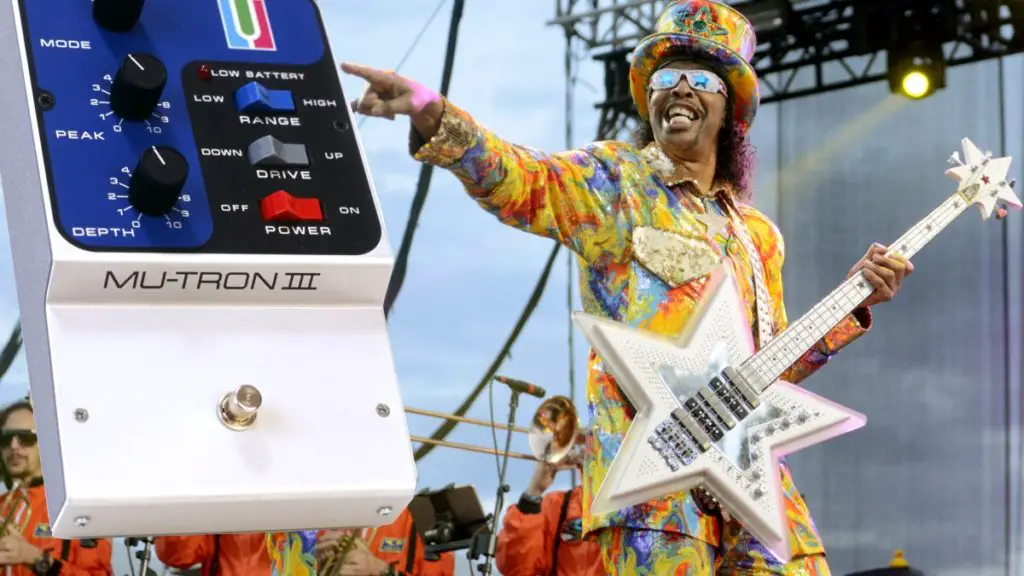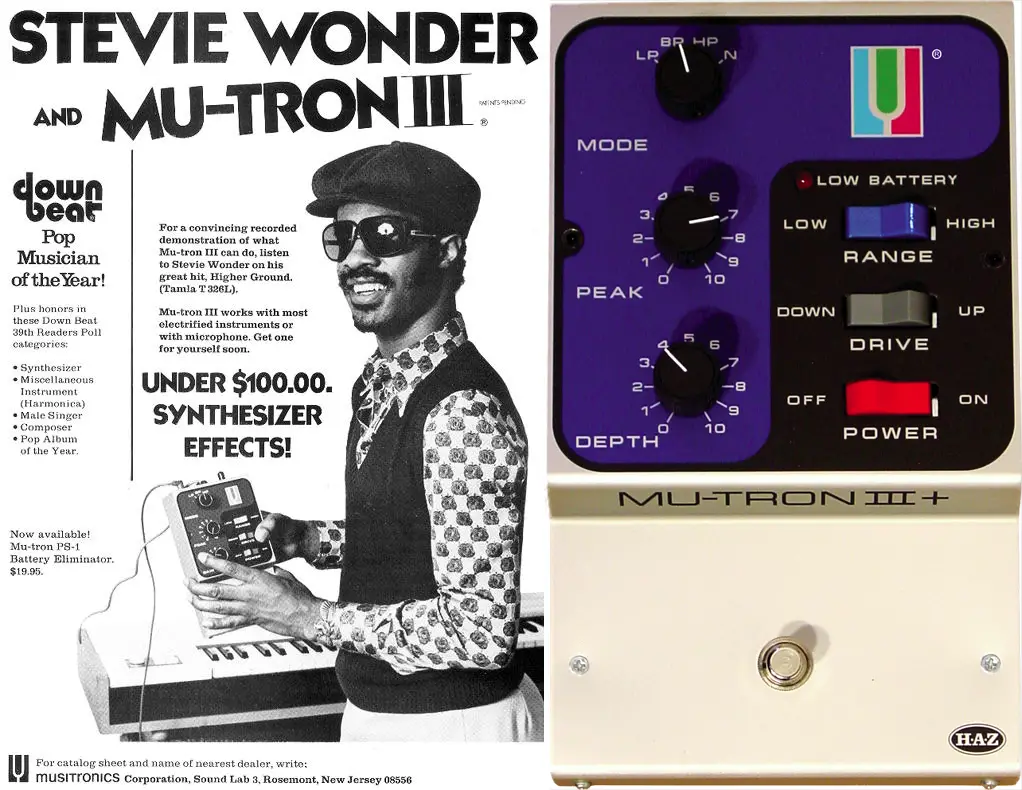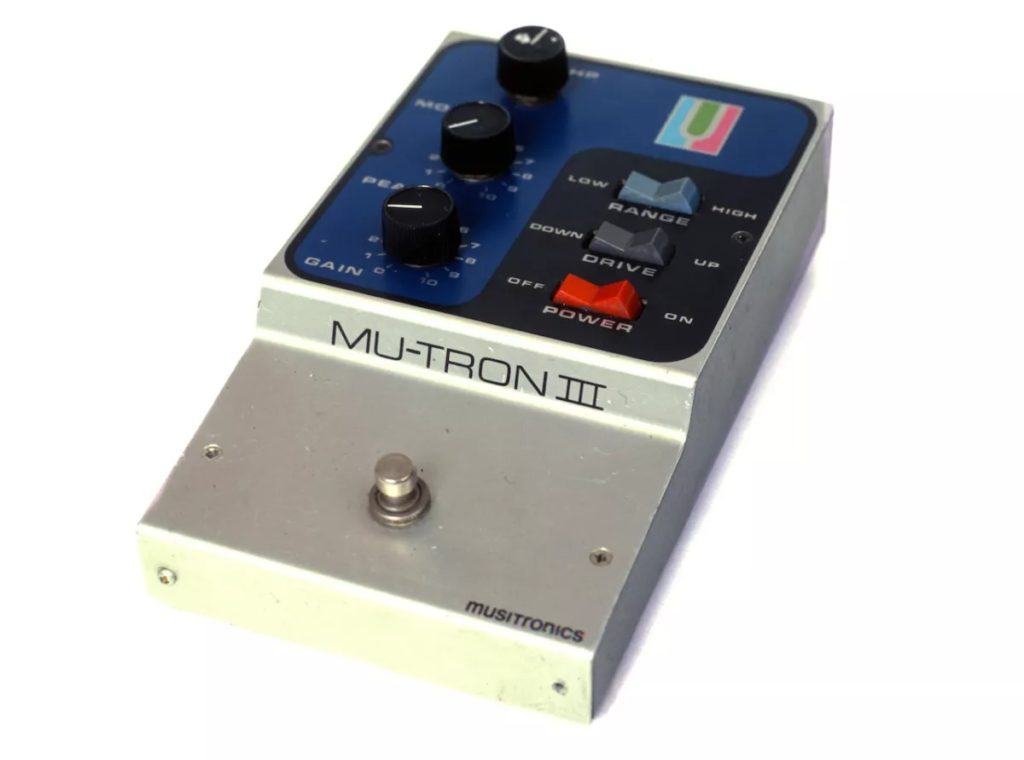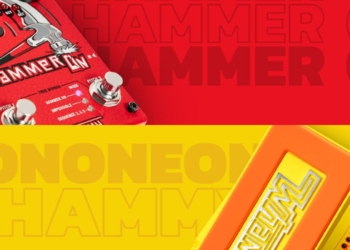The envelope filter is the go-to effect pedal for instant funk-bass sound, and the Musitronics Mu-Tron III is considered the first and best option. Just think of Flea’s Sir Psycho Sexy, where the dying batteries of his Mu-Tron III produced the dripping funk squelch or Bootsy’s filter-heavy bass guitar playing in Parliament Funkadelic.

Bootsy Collins is even rumored to have claimed that “there ain’t no Bootsy” without the Mu-Tron. So, let’s explore the cosmic spill of the Musitronics Mu-Tron III.
The Mu-Tron III: A Brief History of the Envelope Filter That Changed the Game
In 1972, Musitronics Corp was founded by Mike Beigel and Aaron Newman in Rosemont, New Jersey. Following an unsuccessful synthesizer project for Guild, Beigel repurposed some of his designs to develop an envelope-controlled filter suitable for electronic instruments.
The prototype was called the ‘Auto-Wah,’ but it was renamed the ‘Mu-Tron,’ a contraction of the company name before it was released. The Roman numeral ‘III’ was Beigel’s favorite number and was used from the beginning; versions ‘I’ and ‘II’ did not exist.
Musitronics continued manufacturing the Mu-Tron III and other phase and octave effects until 1979, when ARP acquired the company. ARP continued manufacturing the Mu-Tron for nearly a year before the firm went bankrupt in 1980.

The Mu-Tron II Specifications
The Mu-Tron III includes six simple controls – three knobs and three switches – that allow you to fine-tune the filter in various ways. The mode control determines whether a low pass, band pass, or high pass filter sweep is used. The peak knob controls how much of the filter is added to the signal, while the gain control functions as both a volume and sensitivity control.
The range switch adds the filter sweep to your signal’s low or high end, and the drive switch is turned up for those classic auto-wah sounds. Like all envelope filters, the level of ‘quack’ is determined by how hard you press the strings on your bass, so you’ll need to tweak the settings.

This pedal’s incredible tone makes it extremely easy to fall in love with it. Every option yields one of those iconic filter tones so reminiscent of classic P-Funk recordings. Set the gain level to very low and the peak control to complete for a thick, muddy filter tone. When the drive switch is turned down, the filter closes as you strike the string, giving an ‘owwh’ vowel sound, similar to listening to an underwater ray cannon.
If you want to try new sounds, pair the Mu-Tron III with an octaver, which works brilliantly with any other pedal.
Collectible Status and Why It’s One of the Greatest Pedals of All Time
The Mu-Tron III became an immediate collector’s item during the stompbox revival of the 1990s and continues to be so. Originals are still available on eBay regularly, and they occasionally appear on forums as well. They are in high demand and, thus, frequently pricey. Ensure the ‘Musitronics’ logo is visible to the right of the footswitch. Beigel’s new firm Mu-FX also published a tweaked version in 2014.
Regardless of the hype surrounding its collectible status, the MuTron has to be one of the all-time classics regarding pedals. Envelope filters don’t get much better than this.





